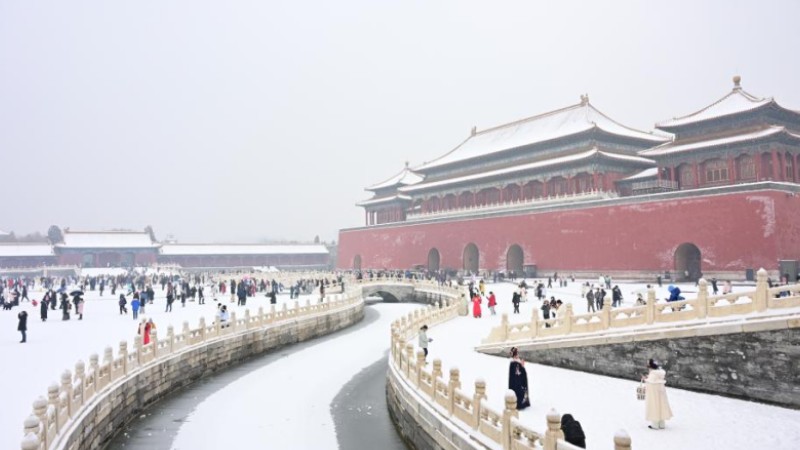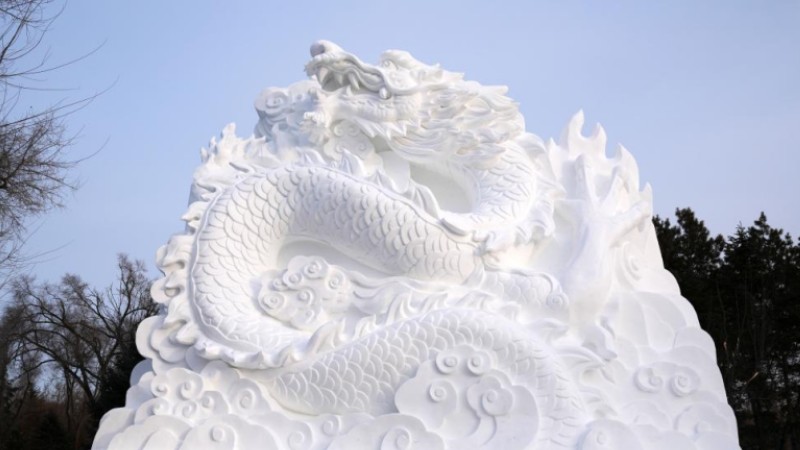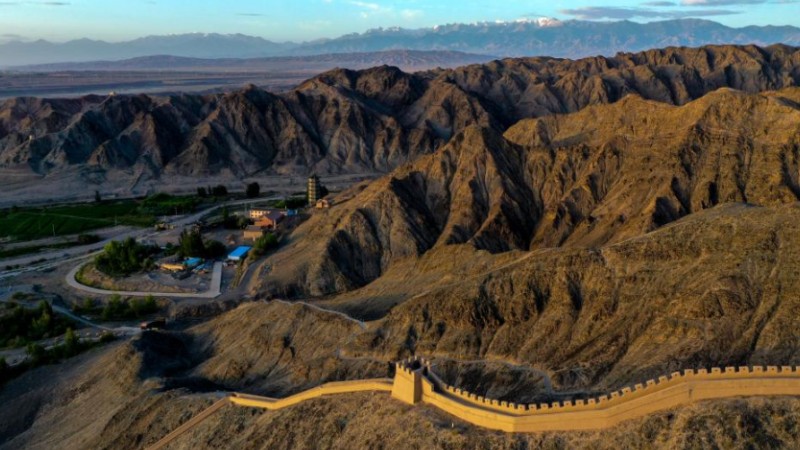Patrol on horseback fortifies Great Wall protection on north China prairie
HOHHOT, Dec. 14 (Xinhua) -- Bolgaa, wearing a felt hat, raced his horse on the snow-shrouded Xilin Gol grasslands to reach a fortress section of the Jin Dynasty (1115-1234) Great Wall in north China's Inner Mongolia Autonomous Region, where his monthly patrol takes about four hours on horseback.
"The Great Wall section in Zhenglan Banner is sparsely populated, where the wall sites are scatteredly distributed," said the patroller of the Mongolian ethnic group.
The 28-year-old is a member of a patrol team composed of local herdsmen in Xilin Gol League, which is the only horseback Great Wall patrol team in Inner Mongolia.
Recruited by the local cultural relics protection department, the team members conduct regular patrols along the Great Wall routes on the Xilin Gol grasslands, which accounts for about one-fourth of Inner Mongolia's grassland area.
In the past 12 years, the patrol team has become an important Great Wall protection force on the grasslands, said Bao Jianing, an official of the Xilin Gol League bureau of cultural, sports, tourism, radio, and television.
He said the team has contributed to checking construction and individual activities harmful to the Great Wall relics and even uncovering clues useful for detecting crimes related to cultural relics.
The Great Wall, a symbol of China, consists of many interconnected walls, some dating back 2,000 years. The existing sections have a total length of over 21,000 km.
Inner Mongolia is rich in Great Wall cultural resources, with a total length of 7,570 km of the ancient wall sections, making up one-third of the country's total. Among them, the Jin Dynasty walls stretch more than 5,000 km. Many of the wall relics have suffered damage.
Bolgaa said that although the Jin Dynasty Great Wall was mainly built with earth, rather than big rocks and bricks like other more magnificent Great Wall sections, it carries a heavy history.
There are more than 160 members in the team. Bolgaa's teammate Temurbat said he has grown up near the walls. That was why he felt thrilled to join the volunteering team to protect the wall in 2014.
"I was proud to safeguard the cultural relics and thought it would give me no trouble to check the historic sites after grazing, even though the work has no pay," he said.
But the work turned out to be much more challenging than he expected. His ranch is more than 70 km away from the cultural site where he is in charge of the monthly patrol. He has to drive to the site and change to horse riding to patrol the 30-km long wall route, which takes more than 3 hours in good weather.
"In the long winter, it is difficult in minus 30 degrees Celsius," said Temurbat.
Despite the harsh conditions, he considered the patrol worthwhile as some profiteers may choose to take actions such as theft and destruction of the Great Wall and cultural relics under the concealing bad weather.
"Over the years, such harmful activities have become much less than before, which should be partly attributed to the improved public awareness of the Great Wall protection," he said.
Wang Guibing, an official of the regional cultural heritage bureau of Inner Mongolia, said that the horseback patrol team, working together with the local public security department, border police and government relics protection staff, has greatly strengthened the local cultural relics inspection and protection work.
He said that 1,380 volunteers are currently registered for the Great Wall protection patrol in the region. In addition to recruiting volunteers, Inner Mongolia has adopted various measures to reinforce the Great Wall protection, including distributing drones to all the 103 counties, leagues and districts of the region.
Photos
Related Stories
- Shutterbugs portray ancient Great Wall through camera lens
- Illustrator arouses deeper interest in the Great Wall through her captivating drawings
- Pic story of illustrator inspired by Great Wall in Dandong, NE China
- Tech investment increased to preserve Great Wall in NW China
- Biological community protects Great Wall's earthen sections from erosion
Copyright © 2023 People's Daily Online. All Rights Reserved.









